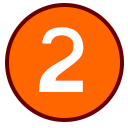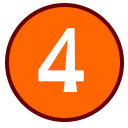Worth 30% of your course grade
 Important Dates
Important Dates
- July 30: Proposal for Project 4, due by 11:55 PM
- August 4: Progress Report for Project 4, due by 11:55 PM
- August 10: Rough Drafts for Peer Feedback, due by 9:00 AM
- August 11: Project 4 due by 11:55 PM
- August 13: Grace period ends at 11:55 PM
Goals
 The Project Assignment
The Project Assignment
You will learn everything there is to know about a kind of writing you will do in your career. You will find online resources, interview people in the field, and analyze examples. You’ll publish your findings in an analytical report that explains how the genre works. You will write a short proposal and a progress report, in addition to the final report.
Step-by-Step Details
 Step 1: Decide on a genre to explore for your project. Return to the table you created for Project 2, or think about the writing you do or will do in your field. Choose a kind of writing that you have not previously done. Ideally, you should choose a kind of writing that your genuinely want to know more about or that you know will be critical to success in your field.
Step 1: Decide on a genre to explore for your project. Return to the table you created for Project 2, or think about the writing you do or will do in your field. Choose a kind of writing that you have not previously done. Ideally, you should choose a kind of writing that your genuinely want to know more about or that you know will be critical to success in your field.
You will research the kind of writing you choose, focusing on the particular kind of writing for the next two weeks. You will turn in a proposal for your project on Thursday, July 30.
 Step 2: Set your goals for the project.
Step 2: Set your goals for the project.
As has been the case for all the projects in this class, you have the opportunity to aim for the grade you want to earn on this project. The options below outline what you need to do for the grade you want to receive.
No one, in my experience, aims for a D, so I have not included any details for below-average work. If you really want a D, just put in minimal effort and do sloppy work.
 Warning! No grade is guaranteed.
Warning! No grade is guaranteed. Make sure your work is error-free, fully-developed, and ready to share with the intended audiences. Any work that is incomplete or that contains multiple errors will not earn an A or an A-.
For instance, say the writer aimed for a B and used design elements to make the report visually appealing, but the finished text was full of typos. It was obvious the writer didn’t proofread at all. The project earns a C rather than a B.
 Step 3: Write your analytical report.
Step 3: Write your analytical report.
Research and write your analtical report as a document on Google Drive. I strongly urge you to create your report in Drive from the beginning to avoid formatting issues. Formatting errors will lower your grade.
With examples and relevant formatting, your report will likely be close to 20 pages long. Review the example genre analysis reports to see the kind of layout and design that are appropriate for your project.
The research for your report should include the following:
- a literature review and evaluation of online resources (to learn what have other researchers already studied and said about the particular genre in question),
- interviews with people who actually write and read these documents to learn about their experiences with it,
- and site inspection (examining the actual physical work environment or conditions researchers already studied and said about the particular genre in question), experiences with it, that affect the process of this particular genre is typically composed).
You will analyze and explicate the rhetorical situation for your particular genre—that is, you will identify and explain the problem that creates the need for this particular form of written communication, the purpose and occasion that calls this kind of writing into being, or the work that needs to be done and to which this text responds.
You will analyze the audience or users of this particular genre of written communication, including their knowledge, experience, and work environments, their motivations for working with the genre in question, how they perceive and use the text in question, and what they do with it.
You will outline the constraints at work on the writers and the readers of these documents, including computing environments, documents, facts, and workplace objects, but also less tangible factors such as relations, beliefs, attitudes, traditions, images, interests, and motives that are in play in their organizations or workplaces.
You will obtain at least three examples of the particular genre in question and analyze them to extract the generic conventions, characteristics, features, and strategies that distinguish this genre.
You will post a progress report on your project on Tuesday, August 4. You will post your draft for peer review by 9 AM on Monday, August 10. Use the advice you receive from your readers to revise your report before the due date. There are no rewrites or revisions after work is graded.
 Step 4: Complete the transmittal memo.
Step 4: Complete the transmittal memo.
A transmittal memo is like a cover letter for your project. It tells me whatever information I need to know to understand the work you did on your project.
You will write a short transmittal memo that gives me the Share link to your report and explains the decisions you made for Project 4. More details on this memo will be included in the post for the due date (July 11). Be sure that you follow the instructions, include the relevant information, and proofread your memo. If you skip this memo, you lower your grade on the project.
 Step 5: Submit all the documents in Scholar.
Step 5: Submit all the documents in Scholar.
When you are finished with the project, you will submit your transmittal memo in the Assignment tool on Scholar with the Google Share link to your analytical report. Details on how to submit your work will be included in the post for the due date (July 11).
Note that if the submission is not a Google Drive document, I cannot provide any feedback on your work.




